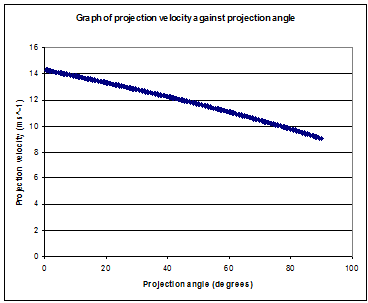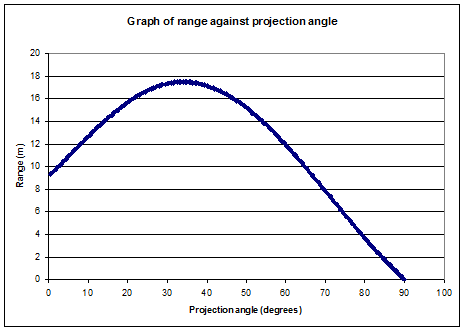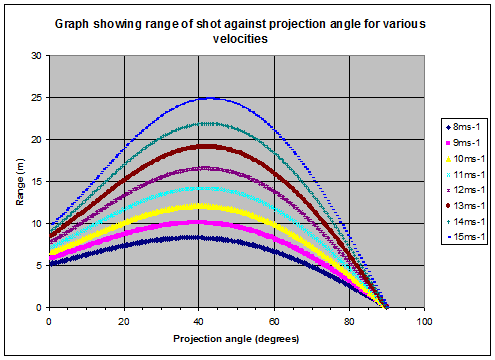Copyright © University of Cambridge. All rights reserved.
'Angle of Shot' printed from https://nrich.maths.org/
Show menu
Assuming for the time being that the athlete can launch the shot at the same speed at any angle, I plotted a graph of range against projection angle for a variety of speeds:
Looking at the graph, it appears the optimal angle for maximising range is slightly smaller than $45^{\circ}$.
We now need to incorporate how the maximum launch speed varies with the projection angle. Here's a graph of projection velocity against projection angle. Although the projection velocity decreases as the projection angle increases, the range previously had a maximum at $45^{\circ}$, so the optimal angle will now be a tradeoff between angle and velocity.

We can now calculate the range of the shot using this projection velocity, and plot a graph of range against projection angle (using the same value of the parameters as before):

For these values of the parameters,we can see the optimal angle is now around $35^{\circ}$, as opposed to $45^{\circ}$ in the previous model.
Solving this problem using differentiation is quite messy, but well done to Joshua who had a go; you can see what he did here.
